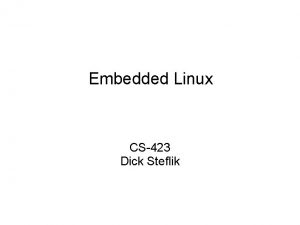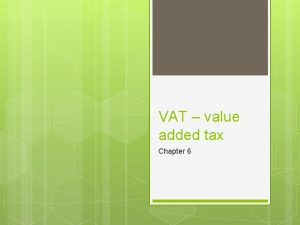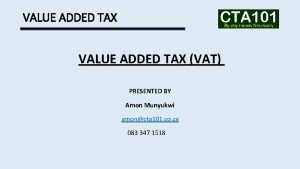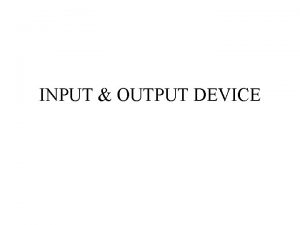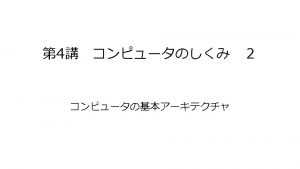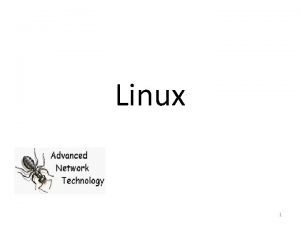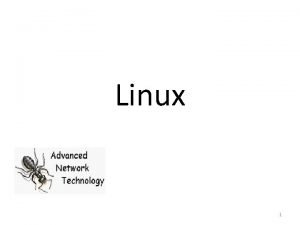Linux Input and Output Input and Output The







- Slides: 7

Linux: Input and Output

Input and Output � � The Linux device-oriented file system accesses disk storage through two caches: � Data is cached in the page cache, which is unified with the virtual memory system � Metadata is cached in the buffer cache, a separate cache indexed by the physical disk block Linux splits all devices into three classes: � block devices allow random access to completely independent, fixed size blocks of data � character devices include most other devices; they don’t need to support the functionality of regular files � network devices are interfaced via the kernel’s networking subsystem

Block Devices � Provide the main interface to all disk devices in a system � The block buffer cache serves two main purposes: � it acts as a pool of buffers for active I/O � it serves as a cache for completed I/O � The request manager manages the reading and writing of buffer contents to and from a block device driver � Kernel 2. 6 introduced Completely Fair Queueing (CFQ) � Now the default scheduler � Fundamentally different from elevator algorithms � Maintains set of lists, one for each process by default � Uses C-SCAN algorithm, with round robin between all outstanding I/O from all processes � Four blocks from each process put on at once

Device-Driver Block Structure

Character Devices � A device driver which does not offer random access to fixed blocks of data � A character device driver must register a set of functions which implement the driver’s various file I/O operations � The kernel performs almost no preprocessing of a file read or write request to a character device, but simply passes on the request to the device � The main exception to this rule is the special subset of character device drivers which implement terminal devices, for which the kernel maintains a standard interface

Character Devices (Cont. ) � Line discipline is an interpreter for the information from the terminal device � The most common line discipline is tty discipline, which glues the terminal’s data stream onto standard input and output streams of user’s running processes, allowing processes to communicate directly with the user’s terminal � Several processes may be running simultaneously, tty line discipline responsible for attaching and detaching terminal’s input and output from various processes connected to it as processes are suspended or awakened by user � Other line disciplines also are implemented have nothing to do with I/O to user process – i. e. PPP and SLIP networking protocols

References � “Operating System Concepts, " by Abraham Silberschatz, et al, 9 th Edition, 2012, John Wiley & Sons Inc. � Operating Systems: A Spiral Approach 1 st Edition by Ramez Elmasri , A Carrick , David Levine

